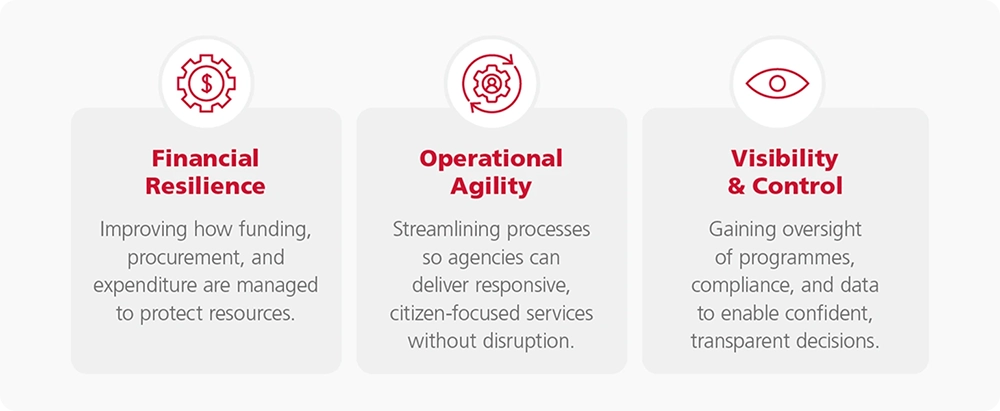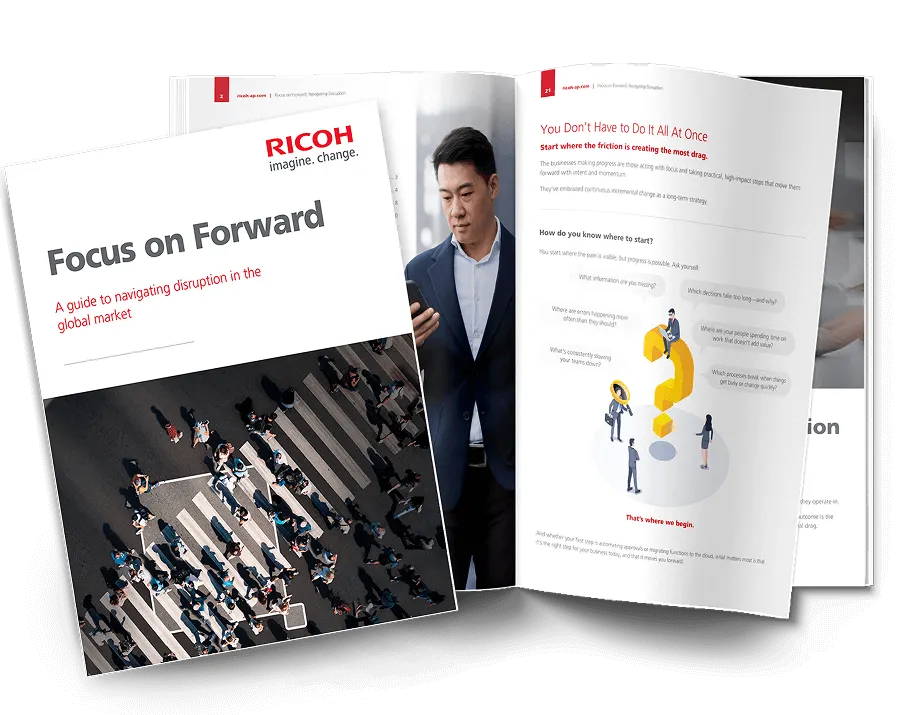Why Responding Now Is Better Than Predicting What's Next
No 2 in Series: Focus on Forward—Navigating Disruption in APAC
In our first article in this series, we explored how constant disruption is putting pressure on orgnanisations across APAC. In part 2 we’ll look at what separates the businesses that merely survive from those that thrive.
Maintaining momentum through economic disruption is key to business resilience. Yet many organisations remain stuck trying to predict what's next rather than building response capability. This results in stalled projects, overwhelmed teams, and inefficient decision-making and causes business to stagnate.
The pressure to transform and solve these issues is real, but in many cases, the solutions that promise these changes end in more team fatigue than productive delivery.
But what if the solution isn't about predicting the next disruption, but building the capability to respond to whatever comes next?
Our work with businesses across the Asia Pacific region has helped us identify three core capabilities that consistently separate organisations that thrive under pressure from those that merely survive: Financial Resilience, Operational Agility, and Visibility & Control.
These aren't abstract concepts, either. They're practical foundations that give you the freedom to act while others choose to wait.
Pillar 1: Financial Resilience

Freeing Cash, Controlling Costs, and Enabling Action
Finance functions are expected to be both strategic and operational, but are rarely given the tools to do so efficiently. They’re often buried in manual processes and dealing with fragmented systems, which causes them to be forced to make reactive decisions.
This results in constant issues and extra everyday work that stall projects like chasing invoices manually and making decisions based on outdated data. Spotting cash flow issues also becomes an afterthought. That is, until they become critical, which ultimately affects the whole business.
When finance is reactive, capital investment delays, stalled projects, and missed growth opportunities become the norm.
Financial resilience sidesteps these issues entirely. When you have financial resilience as a core part of your business practice, it enables:
Pillar 2: Operational Agility

Reducing Friction and Scaling Smarter
Operational teams typically run on systems built for stability, not change. Legacy processes, email chains, and inconsistent workflows create friction that slows response time and blocks innovation. This results in team burnout, delayed projects, duplicate work, and poor coordination across departments.
When disruption hits, such as supply chain shifts or customer demand spikes, they end up scrambling to stabilise instead of responding, often missing opportunities because there’s no space to pivot. Competitors race ahead, while your team is stuck trying to respond.
Operational agility is the ability for teams to respond quickly to changes. When not being bogged down by manual processes, approval bottlenecks, or system limitations, it enables:
Pillar 3: Visibility & Control

Make Decisions Based on Clarity, Not Guesswork
As your businesses grow, so do data siloes. This often leads to decentralised teams, disconnected systems, and ad-hoc reporting, resulting in critical decisions being based on incomplete or outdated information. It affects all levels of an organisation, resulting in delayed responses, compliance risks, and teams duplicating efforts.
The volatility of the current landscape means that without clear visibility, you’re reacting to problems instead of preventing them. Ending up always a step, or several steps, behind.
Visibility & control means having real-time access to accurate data across all operations. This enables confident, rapid decisionmaking and issue identification through:
How the Three Pillars Work Together
These capabilities don't operate in isolation. They reinforce each other to create a business that can move forward during uncertainty.

Most Businesses Already Have Part of This
Here's what we've learned from working with organisations across the region: you don't need to build these pillars from scratch. You probably already have some of these measures in place.
You may have started integrating automation and AI into your workflows. You may have adopted new collaboration technologies and communication tools.
But here’s the critical question: are these initiatives being introduced simply because they seem necessary, or are they deliberately designed to free capacity and reduce friction across the organisation?
The key is knowing where to focus to bring the most impact.
In our Focus on Forward Guide, we dive deeper into how businesses can build these capabilities—starting with Fast-Track Fundamentals that deliver immediate value and relief for busy teams to Growth Accelerators that scale organisational efficiency, to Strategic Plays that create long-term advantage by turning disruption into opportunity.
Conclusion: Knowing Where to Focus Next
Disruption is inevitable but manageable.
The three pillars explored in this article can give you the capability to respond, adapt, and make confident decisions, even under pressure.
In Part 3 of this series, we’ll explore how to build them step by step with a practical technology roadmap. Read it here.
ebook:
Focus on Forward – A Guide to Navigating Disruption
Explore how businesses across APAC are turning pressure into progress with clear, focused action.
Download the full ebook here
ebook:
Focus on Forward – A Guide to Navigating Disruption
Explore how businesses across APAC are turning pressure into progress with clear, focused action.
Download the full ebook here

